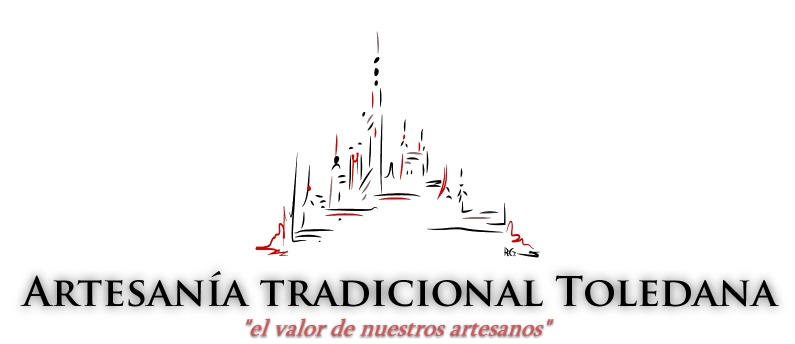1.- Blade.
1.1 Components.
Steel- Is the raw material employed in the elaboration process of a handmade sword based on an iron and carbon alloy or other combined elements, to achieve special metal properties. Our swords are elaborated following the old traditional methods of sword making techniques using carbon steel.

1.2 Process Stages.
1.2.1 Forging- consists in placing the steel into the forge, fully covered with coal and close to the air flow entrance, allowing the metal to reach the required temperature. The swordsmith knows exactly the temperature he will apply on the steel piece due to the color it turns.
- If it becomes straw yellow color, between 200ºC -215ºC approximately
- If red-white, between 1200 ºC and 1400 ºC. At this temperature, the steel changes its color becoming grey first, turning into violet-blue later on and finally a red color. Usually the ideal forging temperature is between 800ºC-1200 ºC (cherry red or light red color) but without attaining the red-white hue.

The steel is taken off the forge and placed on the anvil where is ready for hammering it in order to reduce its width and increase its length and thickness, gradually shaping the blade of the sword. At this point several reheats will be needed to continue working with the steel. Through the forging process the metal becomes harder and also the structure of it changes in order to acquire the precise structure in terms of hardening and strength.
1.2.2 Hardening and Tempering Process- this is the most important step for the blade making process also known as quenching which consists of a heating and cooling process to achieve the critical temperature at which the steel will change its structure. At this point we reach the fundamental state of the steel where the alloy dissolves into iron. For combat swords a mild blade is preferred to avoid fractures. On the other hand, for knives a harder blade will be more appropriate. The hardening process is undertaken using water and/or oil, though water is mostly used for hardening and oil for the tempering process.
1.2.3 Polishing-Buffing- once the blade is forged and tempered, it appearance is rough and it is called “wrought iron”. To obtain a proper finish, the blade requires the action of different grinders working out the edge, the point and the bevels using steel files in order to get that mirror finish which gives strength to the blade.

2 Cross-Guard
The work for the cross and the guard is done with fine materials such as iron, brass… There are two ways of elaborating the guard: forge manufacturing or handmade elaboration. In the last one, the hilt is completely sketch designed, calculating dimensions, cutting the necessary parts and materials (usually iron), forging and soldering the different pieces. This is a full handmade process where heating iron plates and metal bars is required until we get the desired shape of the hilt. Next we grind and sand it to obtain a perfect finish. Finally we will polish the piece to achieve its mirror brilliant appearance.

3 Grip
The grip or handle is usually made of fine wood eg: walnut, birch, fir or pine. The selected material is cut to the required size and shaped with sandpapers and filings. It may be decorated with grooves or different drawings. The finished product may be in burned wood, lined leather or lined wire.

4 Pommel
The pommel should be in line with the cross-guard and grip style. Therecare vaious types eg: rounded, hexagonal, pear shaped, diamond saped… The elaboration method is similar to that of cross making: forging a piece of iron. It also may have grooves and drawings.
5 Assembly
This stage consists in putting all the different pieces together joining the grip and the pommel to the cross. Finally, all the parts are riveted to acquire higher strength and resistance.



 Artesania Tradicional Toledana S.L. Copyright © 2015. All right reserved.
Artesania Tradicional Toledana S.L. Copyright © 2015. All right reserved.